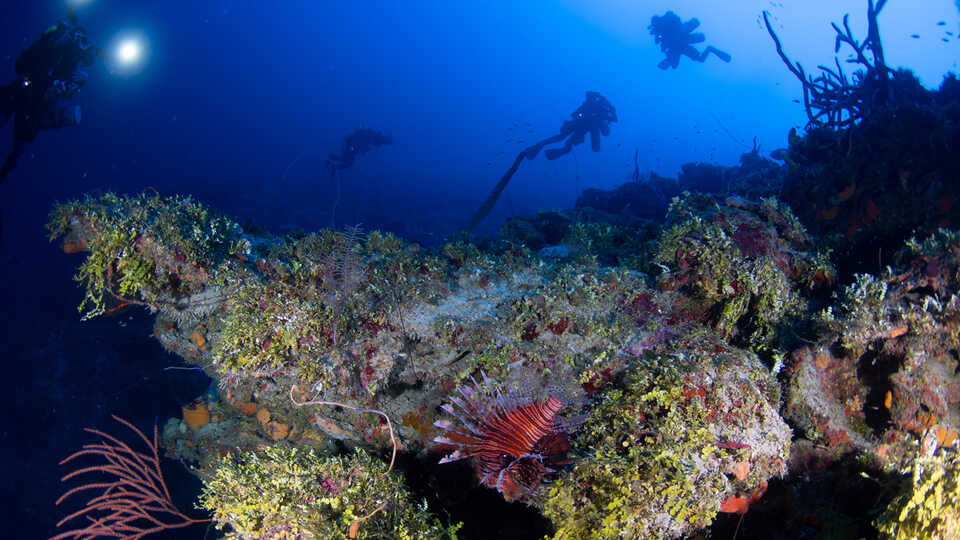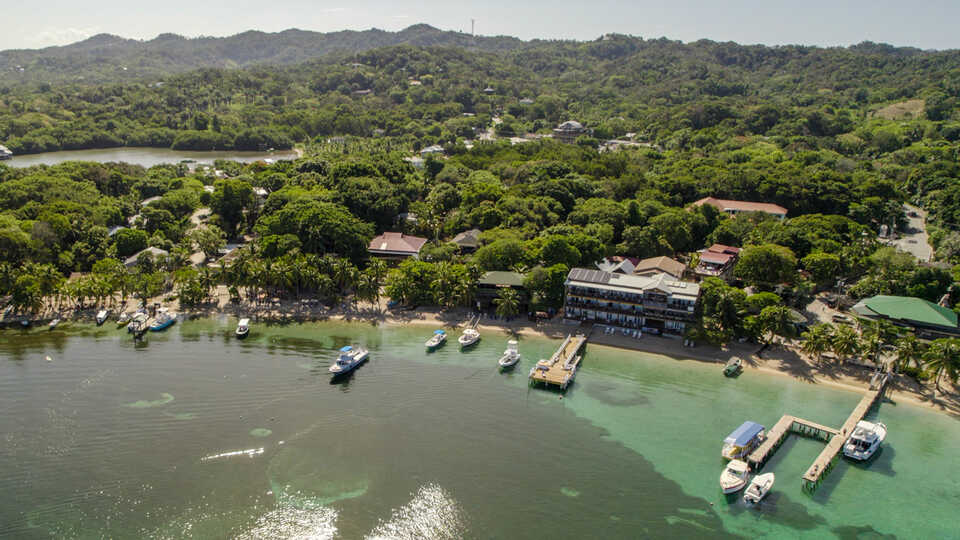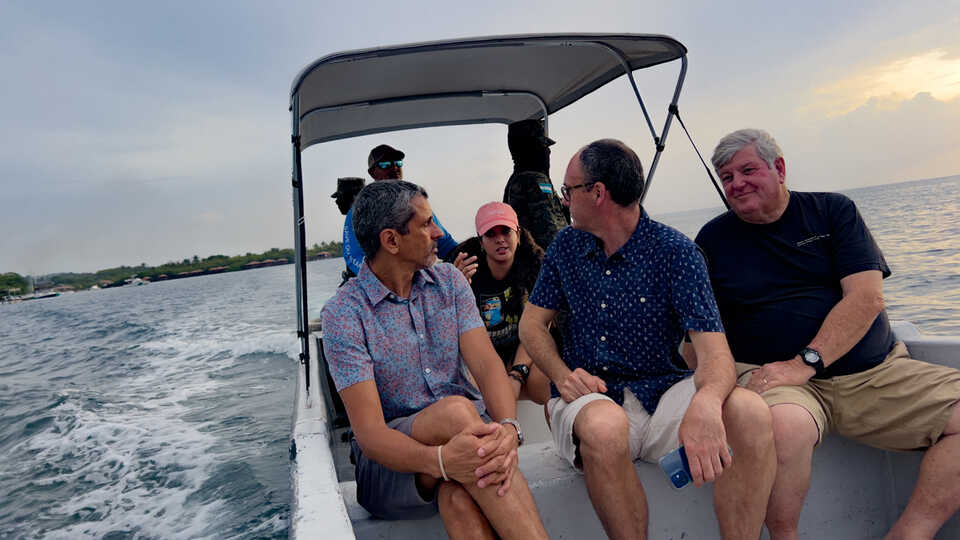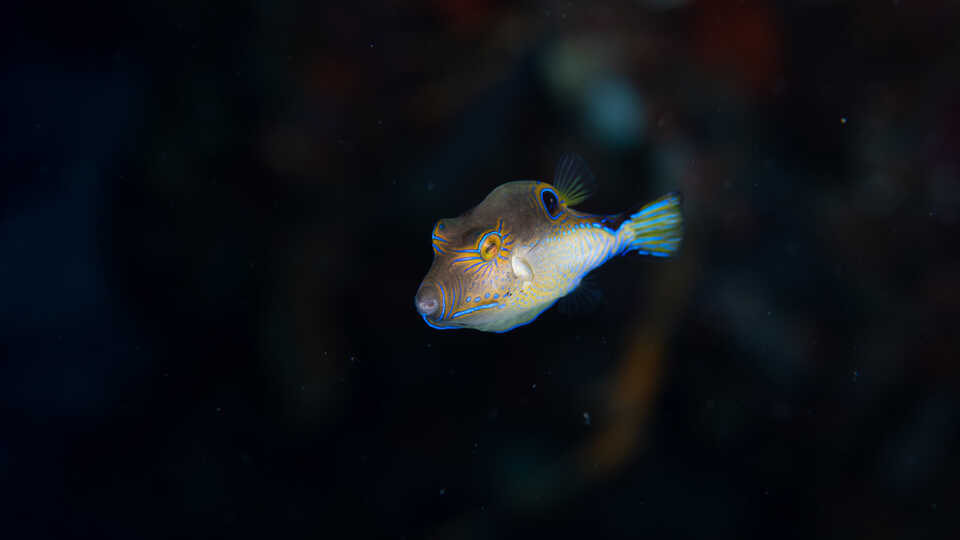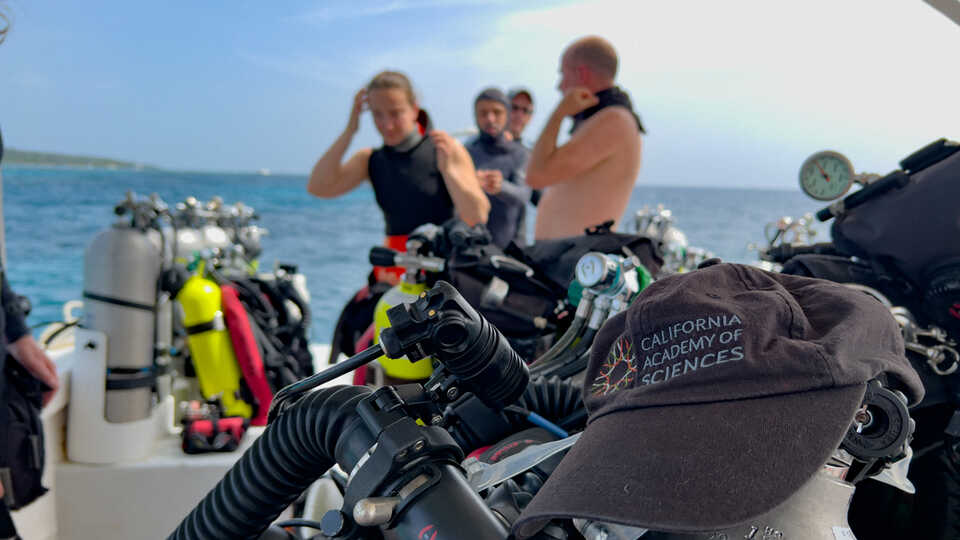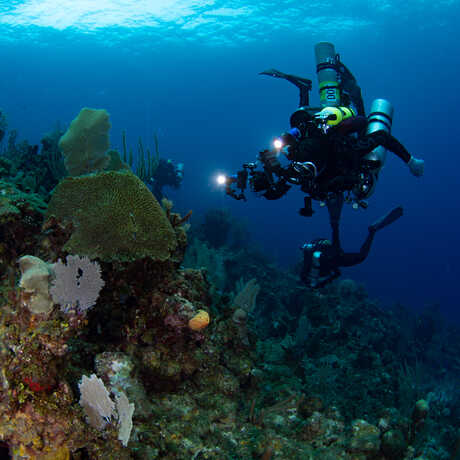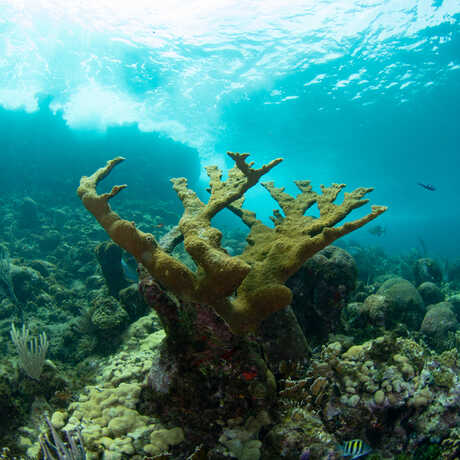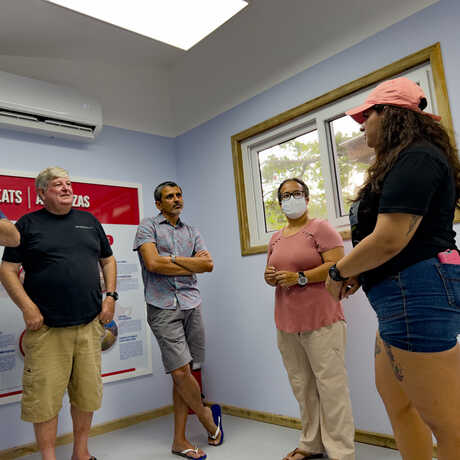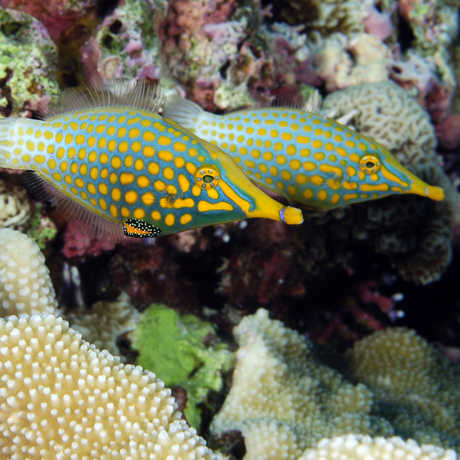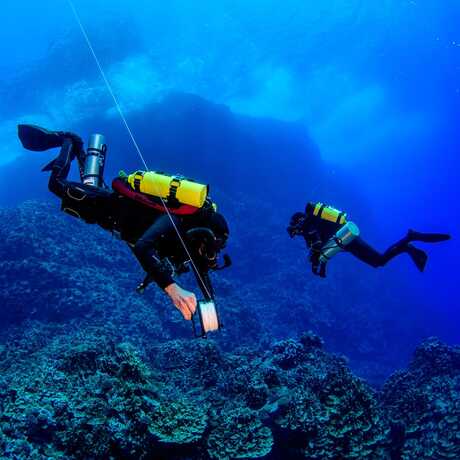Resting just off the northern coast of Honduras, the island of Roatán is one of the most popular dive sites in the Caribbean—and part of the second-largest barrier reef in the world. Thanks to a decade of marine protections led by the community-based nonprofit Roatán Marine Park, the island’s reefs are rebounding from the region’s mass bleaching events at the turn of the 21st century. To accelerate the regeneration of Roatán’s reefs—and potentially co-create models for reef conservation elsewhere in the Caribbean—the Academy’s Hope for Reefs scientific dive team recently surveyed the island’s mesophotic, or twilight zone, reefs and met with Roatán Marine Park staff and local divers.
Keep up with our coral reef research in Roatán and beyond! Follow the Academy's Hope for Reefs team on social media and with the #HopeforReefs hashtag.
